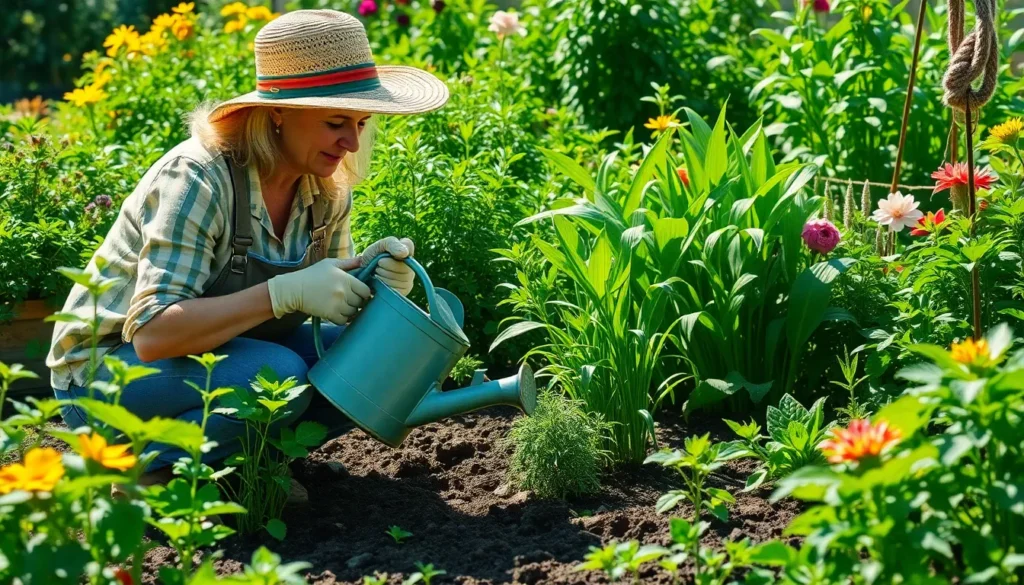We’ve all wondered why some plants thrive while others struggle to survive. Whether you’re a seasoned gardener or just starting your green thumb journey, understanding what plants need to grow is the foundation of successful gardening. The secret lies in mastering the essential elements that fuel plant growth and development.
Plants aren’t as different from us as we might think – they have basic needs that must be met for optimal health. Just like we need food, water, and shelter, plants require exact conditions and resources to flourish. When we provide these fundamental requirements, we unlock their incredible potential for growth, beauty, and productivity.
The good news? Learning what plants need doesn’t require a botany degree. We’ll explore the core elements that every plant depends on, from the obvious necessities to the often-overlooked factors that make the difference between surviving and thriving. Get ready to transform your gardening success by understanding these essential plant needs.
Light: The Primary Energy Source for Plant Growth
Plants convert light into the energy they need through photosynthesis, making proper illumination crucial for healthy development. Without adequate light exposure, even plants with perfect soil and water conditions will struggle to thrive.
Natural Sunlight Requirements
Most plants perform best with 6 to 8 hours of direct sunlight daily, though exact needs vary by species. Full sun plants like tomatoes, peppers, and marigolds require this maximum exposure to produce abundant flowers and fruits. Partial sun varieties such as lettuce, spinach, and impatiens thrive with 4 to 6 hours of direct sunlight. Shade loving plants including hostas, ferns, and begonias flourish in areas receiving 2 to 4 hours of filtered sunlight.
We recommend positioning sun hungry plants in south facing locations where they’ll receive the most intense light throughout the day. East facing spots work well for morning sun plants that prefer cooler conditions, while west facing areas suit plants that can handle intense afternoon heat. North facing locations provide the gentlest light conditions perfect for shade tolerant varieties.
Artificial Light Options for Indoor Plants
LED grow lights offer the most energy efficient solution for indoor plant cultivation, consuming 75% less electricity than traditional incandescent bulbs. Full spectrum LEDs provide wavelengths between 400 to 700 nanometers that plants need for optimal photosynthesis. Fluorescent lights work well for seedlings and low light plants, requiring placement 6 to 12 inches above plant foliage.
We suggest running grow lights for 12 to 16 hours daily for most houseplants to compensate for lower indoor light intensity. High intensity discharge lights produce the strongest artificial illumination but generate important heat that requires proper ventilation. Position any artificial light source close enough to be effective but far enough to prevent leaf burn from excessive heat.
Signs of Inadequate Light Exposure
Stretching stems indicate plants are reaching toward available light sources, creating weak and spindly growth patterns. Pale or yellowing leaves often result from insufficient light preventing proper chlorophyll production. Small leaf development occurs when plants can’t generate enough energy to support full sized foliage.
We notice that flowering plants stop producing blooms when light levels drop below their minimum requirements. Leggy growth with long spaces between leaves signals that plants are allocating energy to height rather than healthy development. Dropping lower leaves frequently happens as plants redirect limited resources to newer growth closer to available light sources.
Water: The Essential Nutrient Transport System
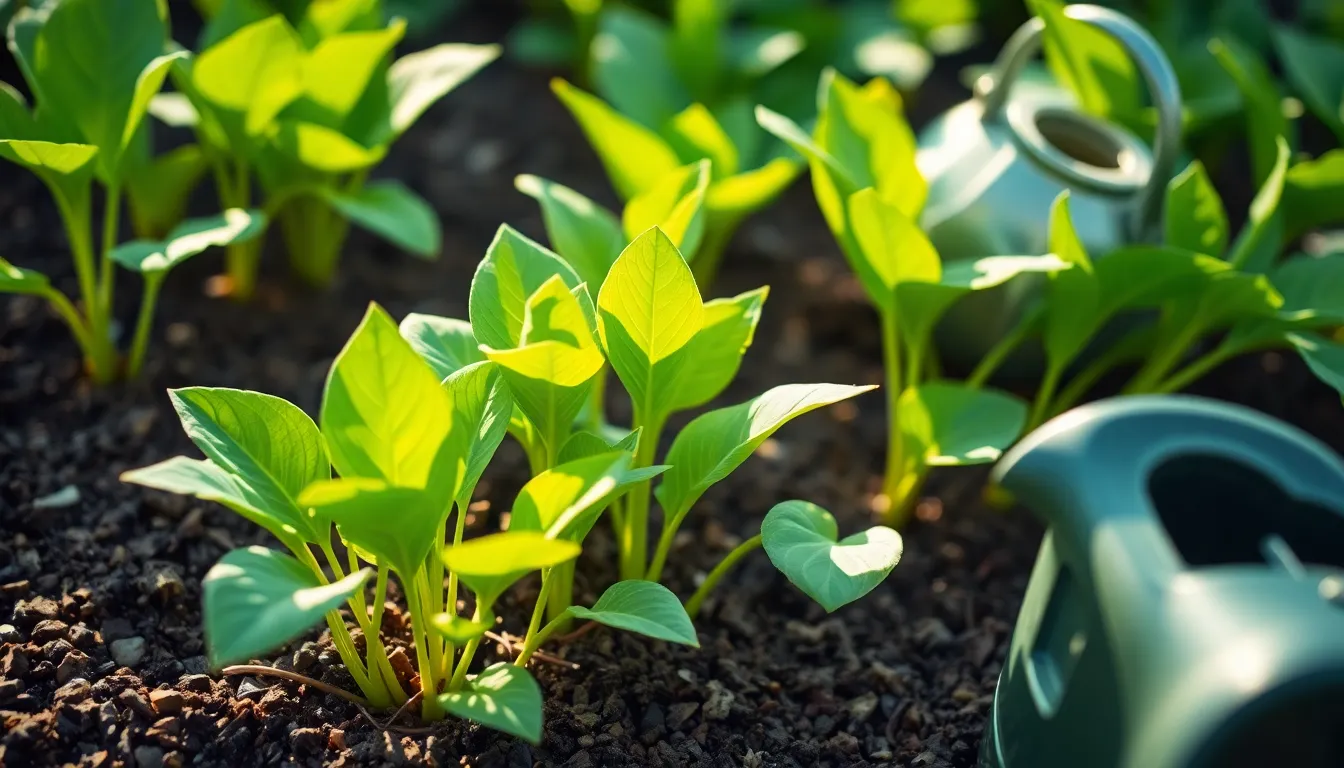
Water serves as nature’s delivery system, carrying vital nutrients from soil to every part of your plants. This essential resource dissolves mineral nutrients like nitrogen, phosphorus, and potassium, transporting them through roots to stems, leaves, and flowers while supporting photosynthesis and temperature regulation.
Proper Watering Techniques and Frequency
Deep watering sessions encourage robust root development rather than shallow watering that creates weak root systems. We recommend watering thoroughly but less frequently to promote strong, deep root growth that can better access soil nutrients and withstand dry periods.
Timing matters significantly for water efficiency and plant health. Early morning or late afternoon watering sessions reduce water loss from evaporation while giving plants adequate time to absorb moisture before temperature extremes.
Frequency depends on multiple factors including plant type, soil composition, climate conditions, and current growth stage. Most plants thrive when soil remains consistently moist but never waterlogged, as saturated conditions can suffocate roots and prevent proper nutrient uptake.
Signs of Overwatering vs. Underwatering
Overwatering creates distinct warning signals that we can easily identify with regular observation. Yellowing leaves often appear first, followed by wilting even though wet soil conditions, root rot development, and fungal growth around the plant base.
Underwatering presents different symptoms that indicate moisture stress in plants. Wilting leaves become the first noticeable sign, progressing to dry or brittle foliage, significantly slower growth rates, and eventual leaf drop as the plant conserves remaining water resources.
Regular soil moisture monitoring helps prevent both watering extremes and maintains optimal growing conditions. We suggest checking soil moisture by inserting your finger 1-2 inches deep to assess whether watering is necessary.
Water Quality Considerations
Clean, uncontaminated water ensures plants receive proper hydration without harmful additives or pollutants. We avoid water containing excessive salts, chlorine, or chemical contaminants that can damage plant tissues and interfere with nutrient absorption.
Rainwater often provides the ideal watering solution due to its natural purity and balanced pH levels. This natural water source contains fewer dissolved minerals than tap water and typically falls within the optimal pH range for most garden plants.
Hard water with high mineral content can significantly affect soil pH and nutrient availability over time. We monitor our water source’s mineral levels and consider filtration systems or alternative water sources when dealing with extremely hard water that could impact long-term plant health.
Soil: The Foundation for Healthy Root Development
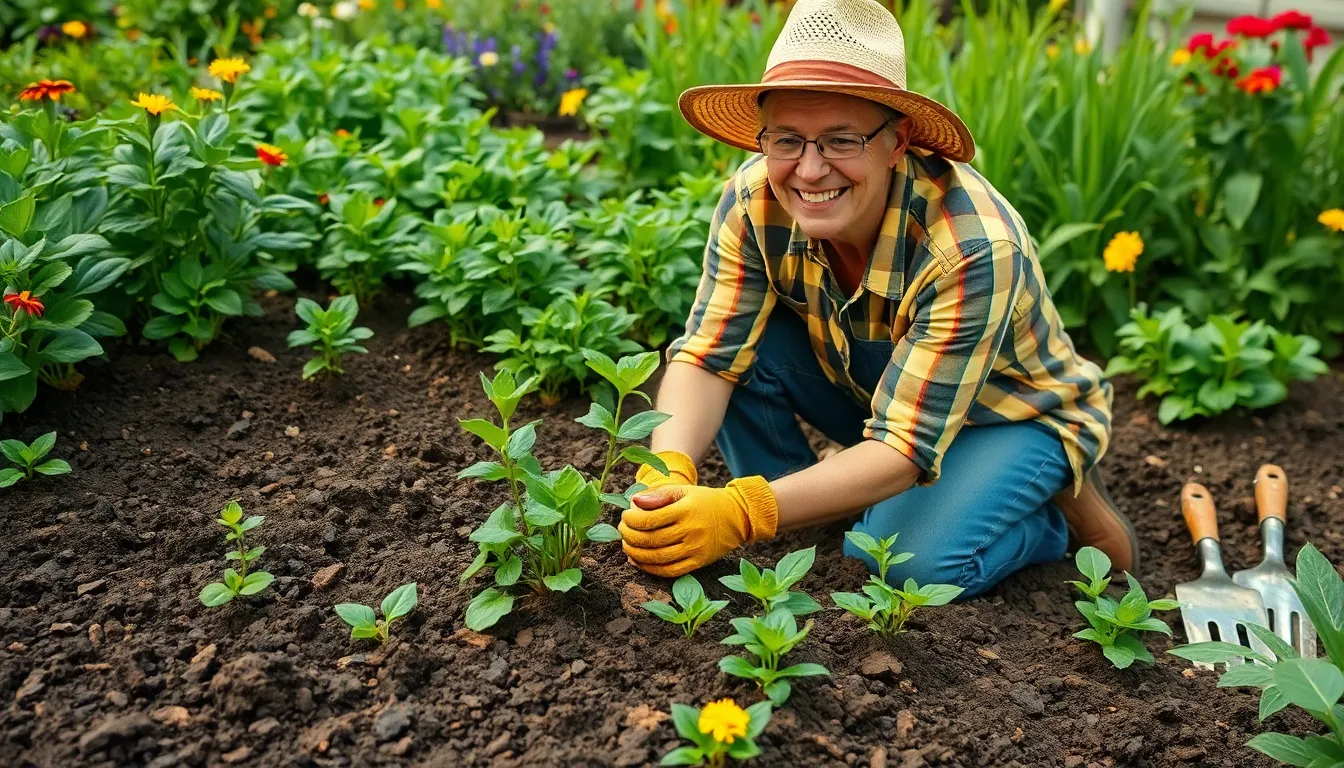
After providing adequate light and water, we must focus on soil quality as the critical foundation that supports all plant growth. Healthy soil creates the optimal environment where roots can establish, spread, and access the nutrients they need to thrive.
Soil Composition and Nutrient Content
Essential nutrients in soil include nitrogen, phosphorus, potassium, and trace minerals that directly support plant functions. Nitrogen promotes vigorous leaf growth and green foliage development throughout the growing season. Phosphorus strengthens root formation and enhances flower production in blooming plants. Potassium improves overall plant health by boosting disease resistance and supporting cellular functions.
Organic matter significantly improves soil fertility by providing these nutrients in forms plants can easily absorb. Beneficial microbial activity increases when we add compost, aged manure, or leaf mold to our soil. These microorganisms break down organic materials and make nutrients more available to plant roots.
Quality soil composition should contain approximately 45% mineral particles, 25% water, 25% air, and 5% organic matter for optimal plant growth.
pH Levels and Their Impact on Growth
Soil pH directly influences how well plants can access available nutrients in the growing medium. Most plants thrive in slightly acidic to neutral pH levels ranging from 6.0 to 7.0 on the pH scale. Acidic soils below 6.0 can limit calcium uptake, leading to stunted growth and weak cell walls in plants. Alkaline soils above 7.0 reduce iron availability, often causing yellowing leaves and poor chlorophyll production.
Testing our soil pH regularly helps us understand whether amendments are necessary for optimal plant health. Simple pH test kits or digital meters provide accurate readings that guide our soil improvement efforts. Lime raises pH in acidic soils, while sulfur or organic matter lowers pH in alkaline conditions.
Different plant species have varying pH preferences, so we should match our soil conditions to the exact needs of our chosen plants.
Drainage and Aeration Requirements
Proper drainage prevents waterlogging that can suffocate plant roots by limiting oxygen availability. Well-draining soil allows excess water to flow away while retaining enough moisture for plant needs. Poor drainage creates anaerobic conditions that promote root rot diseases and stunted plant development.
Aeration provides essential oxygen to plant roots for respiration and nutrient uptake processes. Compacted soil restricts root growth and prevents proper air circulation around the root zone. Loose, well-aerated soil encourages deep root growth and healthy plant establishment.
Sandy soils typically drain well but may require organic matter to improve water retention. Clay soils hold moisture effectively but often need amendments like perlite or coarse sand to improve drainage. Creating raised beds or adding organic compost helps achieve the ideal balance of drainage and aeration for most plants.
Regular soil cultivation and avoiding walking on wet soil helps maintain proper soil structure and prevents compaction issues.
Temperature: Creating the Optimal Growing Environment
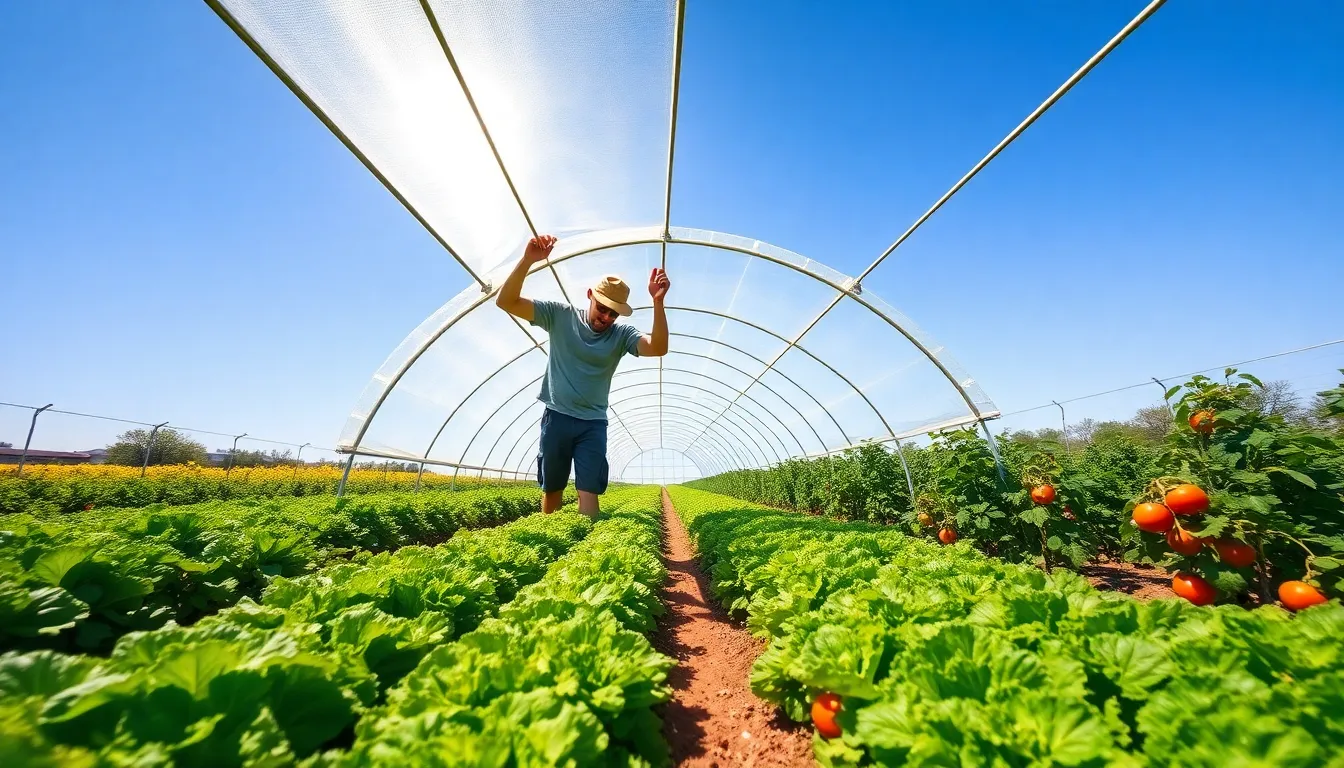
Temperature directly influences plant metabolic processes and enzyme activity. We need to maintain proper temperature conditions to ensure our plants can photosynthesize efficiently and grow at their optimal rate.
Ideal Temperature Ranges for Different Plant Types
Cool season plants such as lettuce and spinach flourish when we maintain temperatures around 55–75°F (13–24°C). These vegetables prefer the moderate conditions that come naturally during spring and fall months.
Warm season plants like tomatoes and peppers require higher temperatures between 70–85°F (21–29°C) to reach their full potential. We’ll notice these plants struggle and produce less fruit if we expose them to cooler conditions.
Tropical houseplants typically need consistent temperatures above 65°F (18°C) to prevent stress and maintain healthy growth. Most of our common indoor plants fall into this category and benefit from stable room temperatures.
Effects of Temperature Fluctuations
Temperature extremes outside the ideal range cause our plants’ stomates to close, limiting CO2 intake and halting photosynthesis entirely. This stress response can slow growth for days even after conditions improve.
Sudden temperature drops damage plant tissues and can delay flowering or reduce fruit quality significantly. We often see blackened leaves or wilted stems when plants experience unexpected cold snaps.
Heat stress triggers increased plant hormone (ABA) levels that continue to slow photosynthesis long after temperatures return to normal. Our plants need time to recover from these temperature shocks, which is why prevention works better than treatment.
Seasonal Temperature Adjustments
Spring planting schedules depend on matching cool season crops with naturally moderate temperatures during this growing period. We start seeds for lettuce, peas, and broccoli when nighttime temperatures consistently stay above freezing.
Summer heat suits warm season vegetables perfectly, so we plant tomatoes, peppers, and squash after the last frost date. These plants need the extended warm period to develop properly and produce abundant harvests.
Protective structures like greenhouses, shade cloths, and row covers help us manage temperature extremes throughout different seasons. We can extend growing seasons and protect plants from unexpected weather changes using these tools effectively.
Nutrients: The Building Blocks of Plant Health
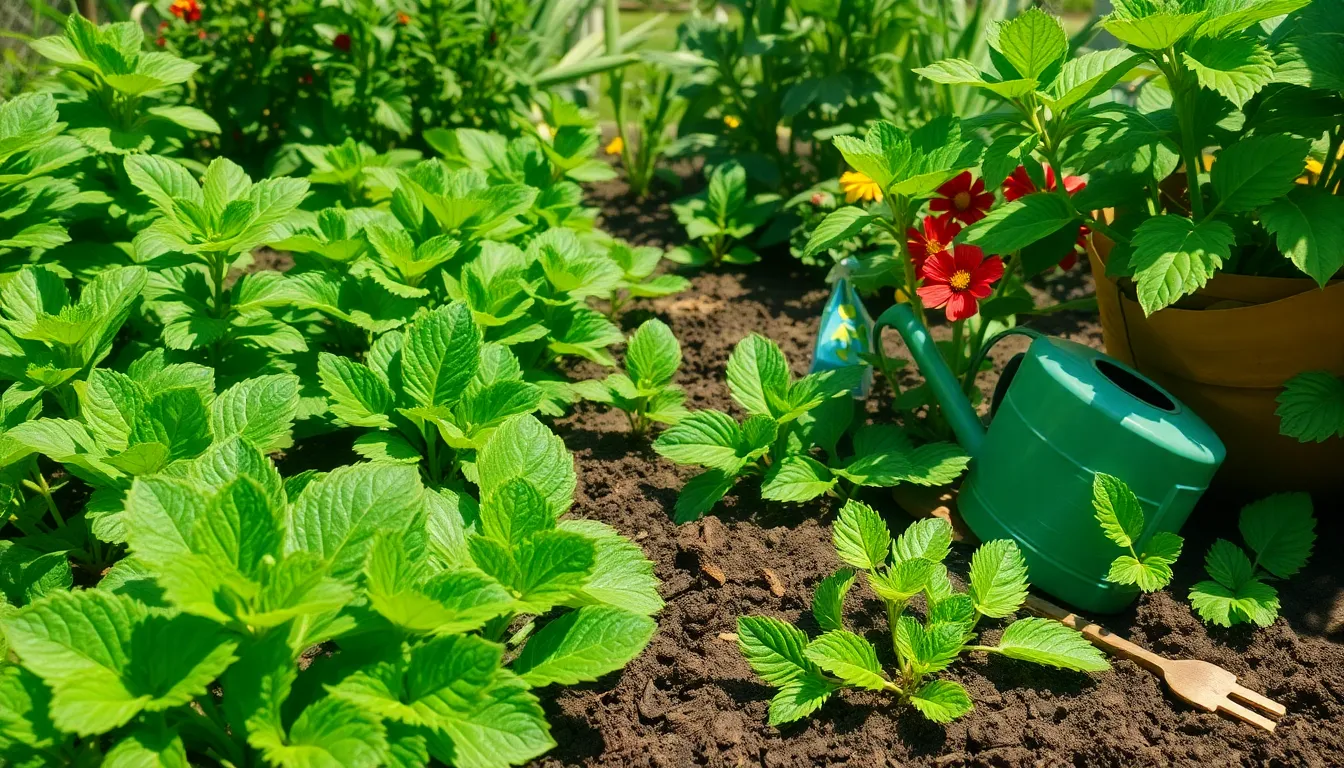
Plants require 16 essential elements to achieve optimal growth and development. Three elements—carbon, hydrogen, and oxygen—come from air and water, while plants absorb the remaining nutrients from soil.
Primary Macronutrients (NPK)
Nitrogen (N) serves as the foundation for protein production, chlorophyll formation, and nucleic acid synthesis in plants. This vital nutrient directly supports leaf growth and enhances photosynthesis efficiency. Stunted growth and yellowing leaves signal nitrogen deficiency in your plants.
Phosphorus (P) drives root development, seed formation, and energy transfer through ATP production. Strong root systems depend on adequate phosphorus levels for healthy establishment. Plants lacking phosphorus exhibit weak root structures and experience stunted overall growth.
Potassium (K) regulates water balance within plant cells while activating essential enzymes. Enhanced stress tolerance against drought and disease resistance relies heavily on potassium availability. Slow growth patterns and weak stem development indicate insufficient potassium levels.
Essential Micronutrients
Calcium (Ca) maintains cell wall stability and supports both root and shoot development through cellular signaling processes. Proper calcium levels ensure structural integrity throughout the plant’s growth cycle.
Magnesium (Mg) forms a crucial component of chlorophyll molecules and activates many enzymes involved in plant metabolism. Healthy photosynthesis requires adequate magnesium concentrations for optimal function.
Sulfur (S) contributes to amino acid synthesis, protein formation, enzyme function, and chlorophyll production. Plants use sulfur for various metabolic processes essential to growth.
Iron, manganese, zinc, copper, molybdenum, boron, chlorine, and nickel represent critical micronutrients needed in smaller quantities. Various physiological functions depend on these trace elements for proper plant development.
Fertilizer Types and Application Methods
Complete fertilizers contain all three primary macronutrients in balanced ratios to meet comprehensive plant nutrition needs. These formulations provide NPK in single applications for convenience.
Single nutrient fertilizers target exact deficiencies by supplying individual nutrients like urea for nitrogen supplementation. Targeted feeding addresses particular soil deficiencies effectively.
Organic fertilizers derive from natural materials and release nutrients gradually over extended periods. Slow nutrient release prevents burning while improving soil structure long term.
Inorganic synthetic fertilizers offer quick release formulations designed for exact nutrient ratios and immediate availability. Rapid uptake makes these fertilizers ideal for addressing urgent deficiencies.
Application methods include soil incorporation, side dressing, foliar sprays, and fertigation systems. Each technique optimizes nutrient availability and uptake based on crop requirements and soil conditions.
Air Circulation: Supporting Respiration and Preventing Disease
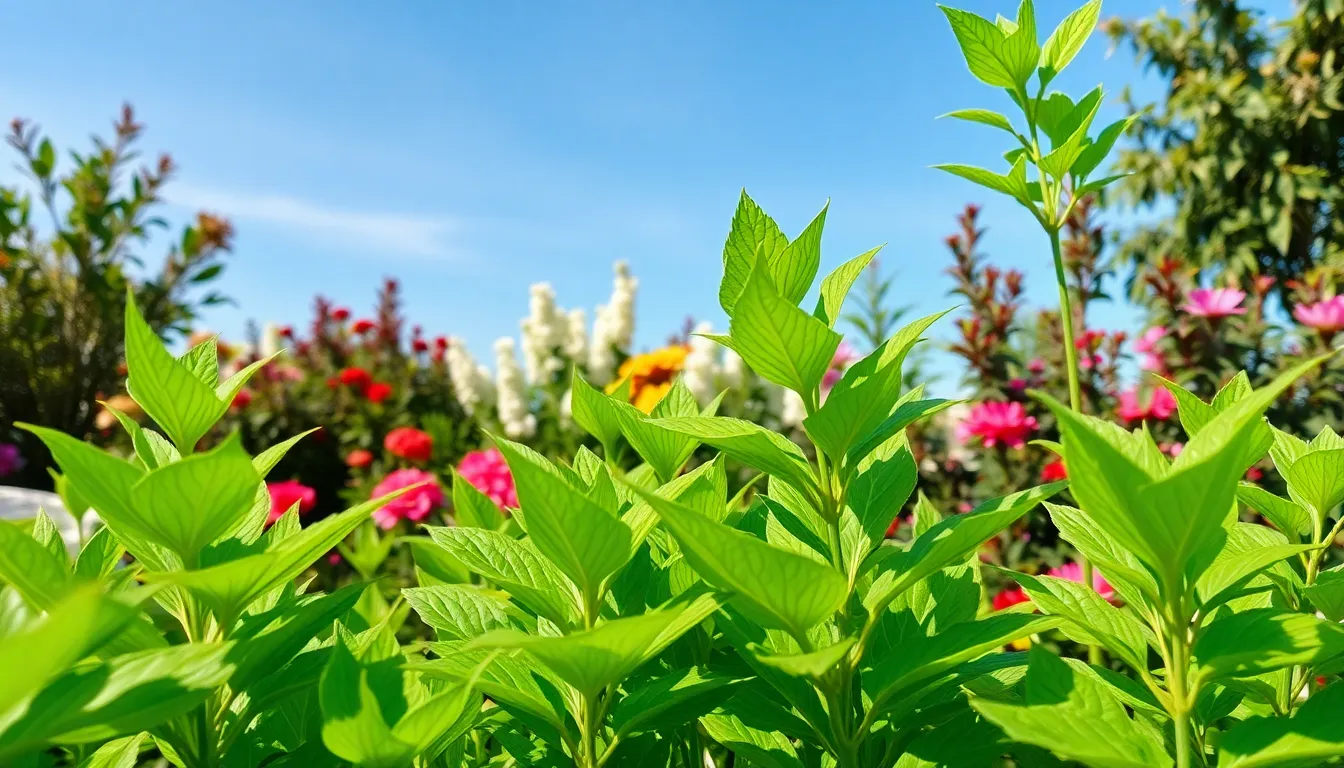
Proper air circulation ranks among the most overlooked yet critical factors for plant health. We’ll explore how air movement directly impacts plant growth through gas exchange and disease prevention.
Carbon Dioxide Requirements for Photosynthesis
Plants absorb carbon dioxide through tiny pores called stomata in their leaves, making this gas essential for photosynthesis. Photosynthesis converts light energy, water, and CO2 into glucose and oxygen, fueling all plant growth processes. Without sufficient carbon dioxide, photosynthesis slows or stops completely, directly affecting plant development.
Stomata must remain open for CO2 uptake to occur effectively. Water stress can cause stomata to close, limiting carbon dioxide access even when light and other conditions are optimal. This closure creates a bottleneck that halts photosynthesis regardless of other favorable growing conditions.
Adequate air circulation ensures fresh CO2 reaches plant leaves continuously. Stagnant air creates pockets of depleted carbon dioxide around foliage, reducing photosynthetic efficiency. Moving air replenishes these CO2 levels, maintaining the concentration plants need for optimal growth.
Importance of Fresh Air Movement
Fresh air movement maintains sufficient carbon dioxide levels while allowing oxygen to diffuse out efficiently. Continuous air exchange prevents the accumulation of ethylene and other potentially harmful gases that plants naturally produce. These gases can inhibit growth and trigger premature aging if allowed to build up around plant foliage.
Air circulation supports the respiratory process by ensuring constant oxygen and carbon dioxide availability to leaves. Good airflow facilitates gas exchange, which directly supports photosynthesis and overall plant metabolism. Plants in areas with poor air movement often exhibit slower growth rates and reduced vigor.
Moving air creates a balanced microenvironment that promotes healthy plant development. Stagnant conditions can stress plants and make them more susceptible to various growth problems. Regular air exchange helps maintain the optimal atmospheric conditions plants need to thrive.
Humidity Levels and Plant Health
Humidity directly affects transpiration rates and stomatal behavior in plants. High humidity reduces transpiration, which can limit nutrient uptake since water movement carries minerals from roots to leaves. Excessive moisture in the air also creates ideal conditions for fungal diseases and bacterial infections.
Low humidity increases transpiration excessively, causing water stress even when soil moisture is adequate. Plants may struggle to replace water lost through their leaves, leading to wilting and stunted growth. Extreme humidity fluctuations can shock plant systems and disrupt normal physiological processes.
Air circulation helps regulate humidity levels around plant foliage by preventing moisture buildup. Good airflow reduces the risk of fungal diseases like powdery mildew and botrytis, which thrive in stagnant, humid conditions. Moving air also prevents pest infestations by creating an environment less favorable to insects and mites.
Maintaining optimal humidity ranges through proper air circulation supports balanced water loss and gas exchange. Plants can regulate their transpiration more effectively when air moves freely around their leaves. This balance promotes robust growth while reducing environmental stress factors that can compromise plant health.
Space: Providing Room for Growth and Development
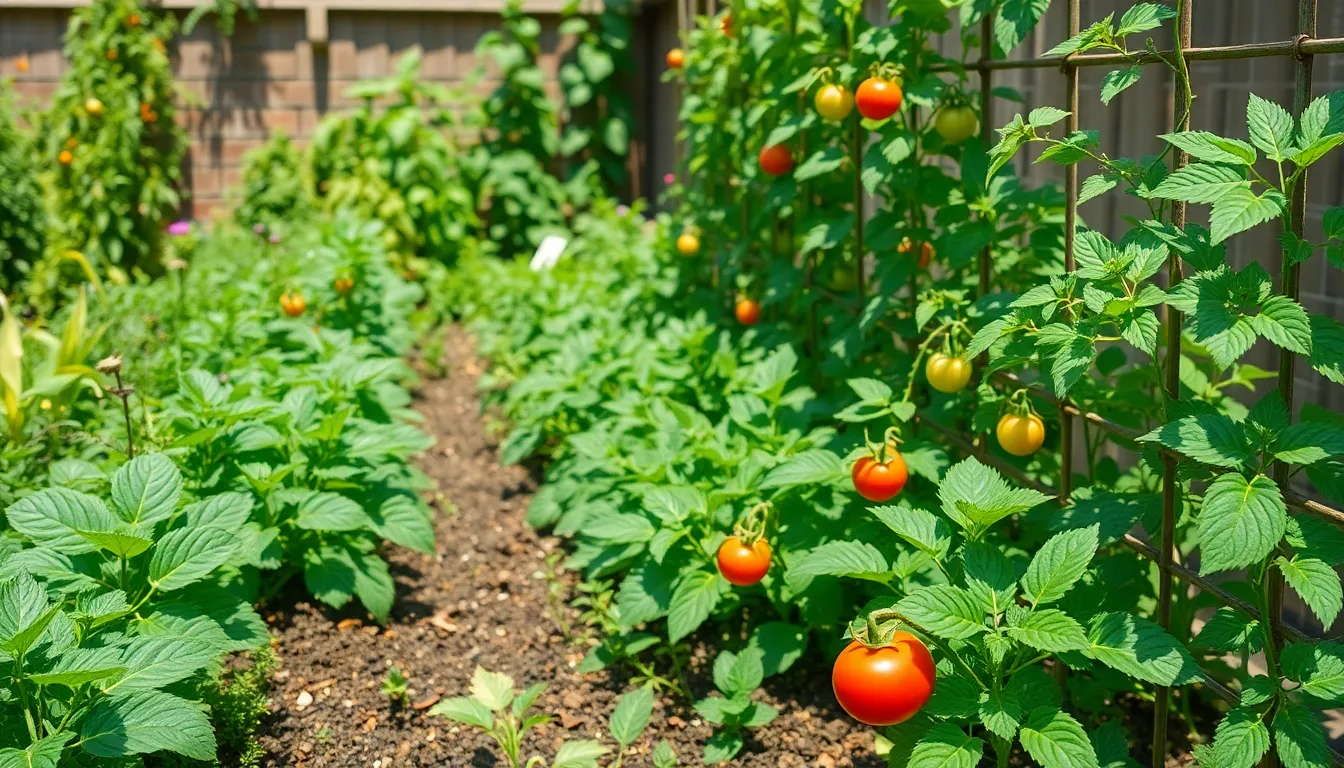
Adequate space remains just as crucial for plant growth as the nutrients and environmental conditions we’ve discussed. Plants need sufficient room both above and below ground to develop their full potential without competing for essential resources.
Root Space Requirements
Roots demand ample space to expand and efficiently absorb water and nutrients from the surrounding soil. Crowded root systems can severely stunt plant growth by limiting nutrient uptake and reducing oxygen availability in the soil.
Underground competition creates stress that manifests in slower growth rates and reduced yields. We’ve observed that plants with restricted root space often develop weak, shallow root systems that struggle to support healthy above-ground growth.
Container gardens require special attention to root space, as potted plants quickly become root-bound without proper sizing. Transplanting to larger containers or dividing overcrowded root systems helps maintain healthy plant development.
Above-Ground Growing Space
Above-ground plant structures need sufficient space to allow proper leaf and stem development without interference from neighboring plants. Adequate spacing prevents competition for sunlight while increasing air circulation and reducing disease risk.
Overcrowded plants stretch toward available light sources, creating weak, elongated stems that can’t properly support flower and fruit production. This competition also limits each plant’s access to fresh air movement, which we know is essential for gas exchange and disease prevention.
Vertical growing space matters just as much as horizontal spacing, especially for climbing plants and tall varieties. Providing proper support structures and height clearance allows plants to reach their mature size without becoming damaged or stunted.
Proper Plant Spacing Techniques
Spacing requirements depend entirely on the plant type and its expected mature size rather than its current seedling dimensions. Following recommended spacing guidelines ensures each plant receives adequate light, air, and nutrients while promoting healthy growth and higher yields.
Small plants like lettuce and herbs typically need 6-12 inches between plants, while larger vegetables such as tomatoes and peppers require 18-36 inches of spacing. Fruit trees and large shrubs need even more room, often requiring 6-15 feet between plantings.
Square foot gardening techniques help maximize space efficiency by organizing plants according to their size requirements. This method allows us to fit more plants in smaller areas while still providing adequate growing room for each variety.
Successive planting schedules prevent overcrowding while extending harvest periods throughout the growing season. Staggering plantings every 2-3 weeks ensures continuous production without overwhelming limited garden space.
Conclusion
We’ve covered the seven fundamental elements that every plant needs to thrive: light water soil temperature nutrients air circulation and adequate space. By understanding these essential requirements we can create the optimal growing environment for our plants whether we’re cultivating an indoor herb garden or managing a large outdoor plot.
Remember that successful gardening isn’t about perfection—it’s about observation and adjustment. When we monitor our plants regularly and respond to their changing needs we’ll see healthier growth stronger yields and more vibrant gardens.
Armed with this knowledge we’re ready to tackle any gardening challenge and help our plants reach their full potential. The journey to becoming a successful gardener starts with mastering these basics.
Frequently Asked Questions
What are the most essential elements plants need to grow successfully?
Plants require six fundamental elements for healthy growth: adequate light for photosynthesis, proper watering for nutrient transport, quality soil with essential nutrients, optimal temperature ranges, good air circulation for respiration, and sufficient space for root and foliage development. Understanding and providing these basic needs ensures thriving plants regardless of your gardening experience level.
How much light do different types of plants need?
Light requirements vary by plant type. Full sun plants need 6-8 hours of direct sunlight daily, partial sun plants require 4-6 hours, and shade-loving plants thrive with 2-4 hours or filtered light. Indoor plants can use LED grow lights as alternatives. Signs of insufficient light include stretching stems, pale leaves, and reduced flowering.
What’s the proper way to water plants?
Water plants deeply but less frequently to encourage strong root development. Water early morning or late evening to minimize evaporation. Check soil moisture by inserting your finger 1-2 inches deep. Overwatering signs include yellowing leaves and musty odors, while underwatering shows as wilting and dry, cracked soil. Use clean water sources when possible.
Why is soil quality important for plant health?
Soil provides essential nutrients like nitrogen, phosphorus, and potassium that plants need for growth. Quality soil contains organic matter and beneficial microbes that enhance fertility. Proper pH levels (usually 6.0-7.0) ensure nutrient availability. Good drainage and aeration prevent root suffocation, while dense or waterlogged soil can kill plants by restricting oxygen flow.
What temperature ranges do plants prefer?
Temperature directly affects plant metabolism and enzyme activity. Cool-season plants like lettuce thrive in 55-75°F (13-24°C), while warm-season plants such as tomatoes prefer 70-85°F (21-29°C). Temperature fluctuations cause stress and can halt photosynthesis. Use protective structures like greenhouses or shade cloths to manage extreme temperatures effectively.
What nutrients do plants need and how should I fertilize them?
Plants require 16 essential elements, including primary macronutrients (nitrogen, phosphorus, potassium) and various micronutrients. Choose from complete fertilizers, single-nutrient options, or organic alternatives based on your plants’ needs. Apply fertilizers according to package directions, considering factors like plant type, growth stage, and soil conditions for optimal results.
How important is air circulation for plant health?
Air circulation is crucial for plant respiration and disease prevention. Proper airflow facilitates gas exchange, allowing plants to absorb carbon dioxide for photosynthesis while releasing oxygen. Good circulation regulates humidity levels, prevents fungal diseases, and maintains optimal growing conditions. Stagnant air can lead to pest problems and poor plant health.
How much space do plants need to grow properly?
Plants need adequate space both above and below ground. Roots require room to expand for nutrient absorption, while foliage needs space to prevent competition and disease. Follow spacing guidelines on seed packets or plant tags. Overcrowding leads to poor air circulation, increased disease risk, and reduced yields. Consider successive planting for continuous harvests.

